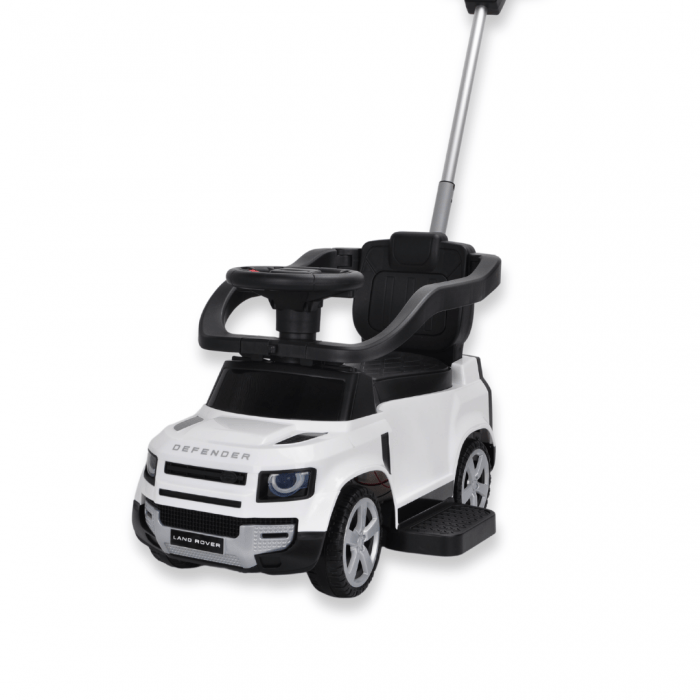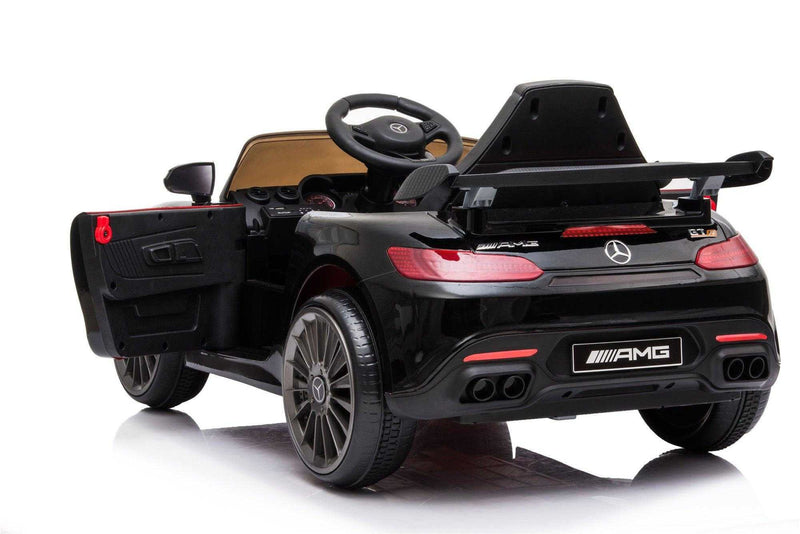Safety features are important to take into consideration when choosing the best ride-on car for your child. This will ensure that your child is safe during playing time. Seat Belts and other safety elements are crucial.
Pros - Seat belts secure your child in the car ride-on, decreasing the possibility of them falling off or being ejected during play. These seat belts offer additional security particularly when taking rapid turns or stopping abruptly.
Cons - Certain ride-on vehicles, especially those for younger toddlers, may not include seat belts. In addition, kids may feel uncomfortable with seat belts or tight, which can lead to refusal or resistance to using them.
Sturdy Construction
Pros - A vehicle that is built with quality materials and sturdy structure will last longer, resistant to damage and ensure long-term safety and reliability. It can stand up to all demands of play and provide stability.
Cons - Construction that is durable is often more expensive, which makes it unaffordable for certain families. Additionally, heavier materials may impact the maneuverability and portability of the ride-on car.
Low Center Gravity
Pros: Cars with lower centers of gravity have a lower chance to overturn, which reduces the risk of accidents or injuries. They offer greater stability and balance, especially during turns or maneuvers.
Pros - Ride-on cars which have a low centre of gravity may compromise off-road capabilities or the clearance of their ground, which limits their range of use.
Remote control for parents -
Pros - Remote-controlled ride-on cars allow parents to supervise and help their children play while adding an additional layer of safety and control. Parents can intervene in emergencies and navigate treacherous terrains or stay clear of collisions.
Cons: Controlling parents using a remotes may hinder independence and autonomy in children as they depend on their parents' guidance and help when playing. Additionally, devices that are controlled remotely may cost more than models that have manual controls.
Speed Limiters
Pros: Ride-on cars with speed limiters or adjustable speeds permit parents to regulate the maximum speed, and decrease the risk for accidents or collisions. They can gradually increase the speed as the child gains confidence and develops.
Cons - Children may quickly grow out of their lower speeds. This can cause frustration or even dissatisfaction. Additionally the speed limiter might not be available in all models. It could also require an additional feature or an accessory.
Safe Start Technology -
Pros The Safe Start Technology makes sure that the ride-on vehicles start and stop without a hitch. This reduces the risk of sudden jerks which could destabilize or startle the child. It offers a more comfortable and safer riding experience.
Cons - Ride-on cars with safe start features could be more costly than the basic cars without this feature. Furthermore, children might find the gradual acceleration and deceleration to be less thrilling or exciting than immediate starts and stops.
Visibility Enhancements
Pros - Ride on cars that feature visibility enhancements, such as functioning taillights or headlights as well as reflective materials improve visibility, particularly in dimly lit locations or with low light conditions. These vehicles improve safety because they make the vehicle easily visible to other pedestrians or cars.
Cons – Visibility improvements may make batteries less efficient or complicate ride-on vehicles' designs, increasing the risk of malfunction or maintenance.
If you take a look at these safety features and weigh the advantages, you'll be able to choose one that is focused on the safety of your child while offering them the most enjoyable and thrilling playtime. Have a look at the recommended kids cars for more advice including riding digger, kiddies cars, race car toy, childrens digger, car electric ride on, ride electric car, electric rideons, car for toy, a toy car, toy cars and more. .

How Are Models For Children's Cars Designed For Indoor And Outdoor Use?
These vehicles have been developed with features and characteristics that are specific to the particular environment and the use situation, whether outdoors or indoors. Here are some of the differences in these car designs indoor Use Cars
Dimension and weight The cars that are made for indoor use tend to be lighter, less bulky and easier to maneuver through small spaces like living rooms, hallways or playrooms. These vehicles are compact and compact, allowing them to effortlessly navigate around narrow passageways or corners.
Low Ground Clarity Vehicles in indoor environments have low clearances so that they don't get stuck, or snagged, on obstructions, like carpets, rugs, or thresholds. This permits smooth, unhindered motion on indoor surfaces.
Smooth Wheels: The wheels on indoor vehicles are typically made from smooth materials like plastic or rubber. This gives the traction and grip needed for smooth surfaces like hardwood floors laminate floors, tiles. The wheels are designed to minimize noise and prevent scratching or scratching surfaces.
Temporary Speed - Indoor use cars typically are slower to ensure safe and controlled operation within tight spaces. This can help avoid collisions or accidents caused by walls, furniture, or other obstacles in the indoor space.
Outdoor Use Cars -
Durable Construction - Cars that are designed to be used outdoors are constructed with tough materials like tough plastic or metal to stand up to rough handling and outdoor elements such as sun, rain and temperature fluctuations. These cars are built to withstand the harsh conditions that are typical of outdoor use.
The higher the clearance of the ground, the better able to handle bumps and uneven terrain. They are able to traverse rough surfaces like pavement, gravel and grass.
Traction Tires-The tires of cars designed for outdoor use often include treads to provide better traction or grip on slick or uneven surfaces. This provides stability and control while driving in the outdoors, and prevents sliding or skidding.
Weather Resistance - Designed for outdoor use, cars may feature components that are resistant to damage from environmental elements or moisture, such as waterproof casings, sealed electronics and even waterproofed ones. This permits the vehicle to be exposed to mud, rain or puddles and still function well.
High Speed - Cars made for outdoor use have higher speeds because they are designed to handle the wide spaces and long distances that can be encountered in the natural world. It is an exciting adventure for kids who wish to experience the outdoors.
Parents can select a car for their kids that is suitable to their needs, indoors or outside, by taking into consideration the features and design. This will provide a fun, safe and long-lasting play experience. Read the most popular go here for electric kids cars for blog recommendations including car toy toy, ride electric car, ride on digger, childs car toy, pedal car, electric ride along car, ride electric car, kidscars, ride electric car, electric ride along car and more. .

What Can I Do To Find Out More On The Experience Of Parents Using Ride-On Car Brands?
There are ride-on car reviews online by using a variety of resources and platforms. Online Retailers are a great place to start your investigation.
Visit online retailers like Amazon.com, Walmart.com, and Target.com which allows you to read customer reviews about the items they've purchased. Choose ride-on models that have a lot of positive reviews and ratings.
Manufacturer Websites -
Learn more about the product's offers, specifications and customer reviews on the sites of ride-on vehicle manufacturers. Certain manufacturers may feature customer testimonials on their websites.
Forums, Communities and Communities on Parenting
Join forums online and parenting groups where parents talk about their experiences with ride-on vehicles and offer suggestions. Reddit BabyCenter The Bump and other websites have dedicated forums where parents can discuss parenting. Ask for advice or read about others' experiences.
Toy Review Web Sites
Check out blogs and websites dedicated to reviewing toys for children and ride-ons. These sites often offer thorough reviews, comparisons or recommendations based primarily on aspects like safety, playability, durability, etc.
YouTube Reviews -
YouTube provides a range of reviews on ride-on cars. Content creators and fans of toys share demos, videos, and unboxings. Video reviews can help give you a better idea of how a ride-on car is able to perform in real-world scenarios.
Social Media Social Media
On social media platforms like Facebook Instagram as well as Twitter You can also follow toy manufacturers and parenting influencers. These platforms usually feature user testimonials and product reviews.
Consumer Reports and Product Testing Organizations
Consumer Reports (which? ), Good Housekeeping or Consumer Reports are good sources for unbiased reviews. These organizations perform rigorous testing and evaluations in order to assess the performance and quality of the products.
Word of Mouth -
Request recommendations from your friends or relatives who have experience with certain ride-on models. Recommendations from family, friends members, or parents of other children can give valuable information and first-hand reports on the reliability of a product.
Take into consideration safety features, durability and the ease of assembly. Additionally, customer service is essential. Find brands that have been around for a while and are reliable according to consumer and parent reviews. Take a look at the top rated McLaren kids car for more tips including remote control childrens car, childs electric ride on car, electric rideons, electric two seater cars, electric rideons, childs electric ride on car, remote control childrens car, ride on digger, riding digger, childs electric ride on car and more. .
